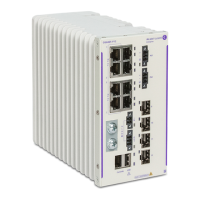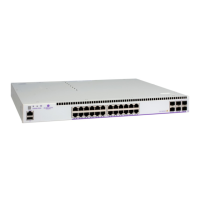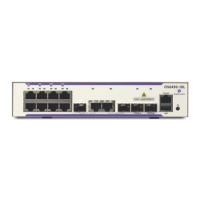Virtual Private LAN Services
7210 SAS M Services Guide Page 255
IGMP Snooping in Network Mode and Access-uplink Mode
In Layer 2 switches, multicast traffic is treated like an unknown MAC address or broadcast frame,
which causes the incoming frame to be flooded out (broadcast) on every port within a VLAN.
Although this is acceptable behavior for unknowns and broadcast frames, this flooded multicast
traffic may result in wasted bandwidth on network segments and end stations, as IP multicast hosts
can join and be interested in only specific multicast groups.
IGMP snooping entails using information in Layer 3 protocol headers of multicast control
messages to determine the processing at Layer 2. By doing so, an IGMP snooping switch provides
the benefit of conserving bandwidth on those segments of the network in which no node has
expressed interest in receiving packets addressed to the group address.
Note: In the following paragraph on IGMP snooping, reference to SDP is applicable only in
network mode.
IGMP snooping can be enabled in the context of VPLS services. The IGMP snooping feature
allows for optimization of the multicast data flow to only those SAPs or SDPs that are members of
the group. The system builds a database of group members per service by listening to IGMP
queries and reports from each SAP or SDP:
• When the switch receives an IGMP report from a host for a particular multicast group, the
switch adds the host port number to the forwarding table entry.
• When it receives an IGMP leave message from a host, it removes the host port from the
table entry, if no other group members are present. It also deletes entries if it does not
receive periodic IGMP membership reports from the multicast clients.
The following are IGMP snooping features:
• IGMP v1, v2, and v3 are supported (RFC 1112, Host Extensions for IP Multicasting,
and
RFC 2236, Internet Group Management Protocol, Version 2). 7210 SAS-M supports
IGMPv3 in access-uplink mode. 7210 SAS-M in network mode does not support
IGMPv3.
• IGMP snooping can be enabled and disabled on individual VPLS service instances.
• IGMP snooping can be configured on individual SAPs that are part of a VPLS service.
When IGMP snooping is enabled on a VPLS service, all its contained SAPs and SDPs
automatically have snooping enabled.
• Fast leave terminates the multicast session immediately, rather than using the standard
group-specific query to check if other group members are present on the network.
• SAPs and SDPs can be statically configured as multicast router ports. This allows the
operator to control the set of ports to which IGMP membership reports are forwarded.
• Static multicast group membership on a per SAP and as per SDP basis can be configured.

